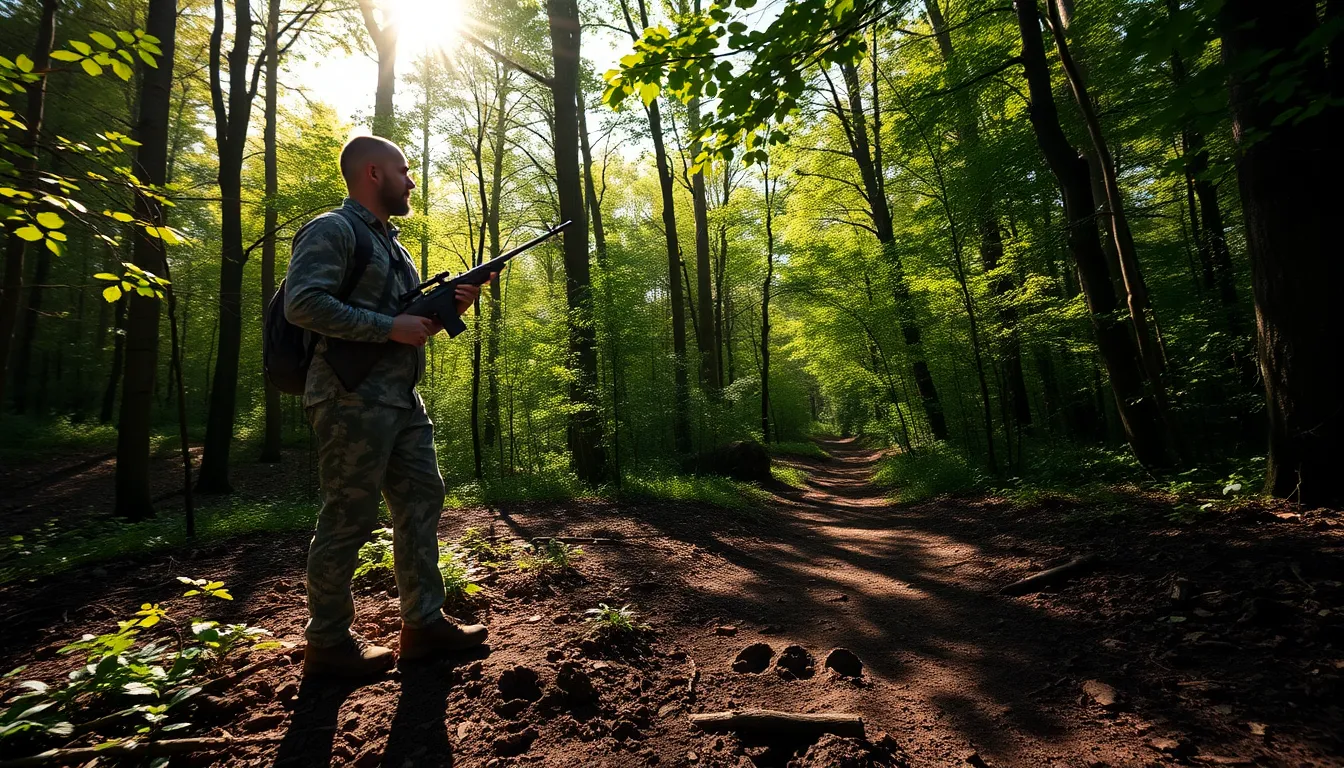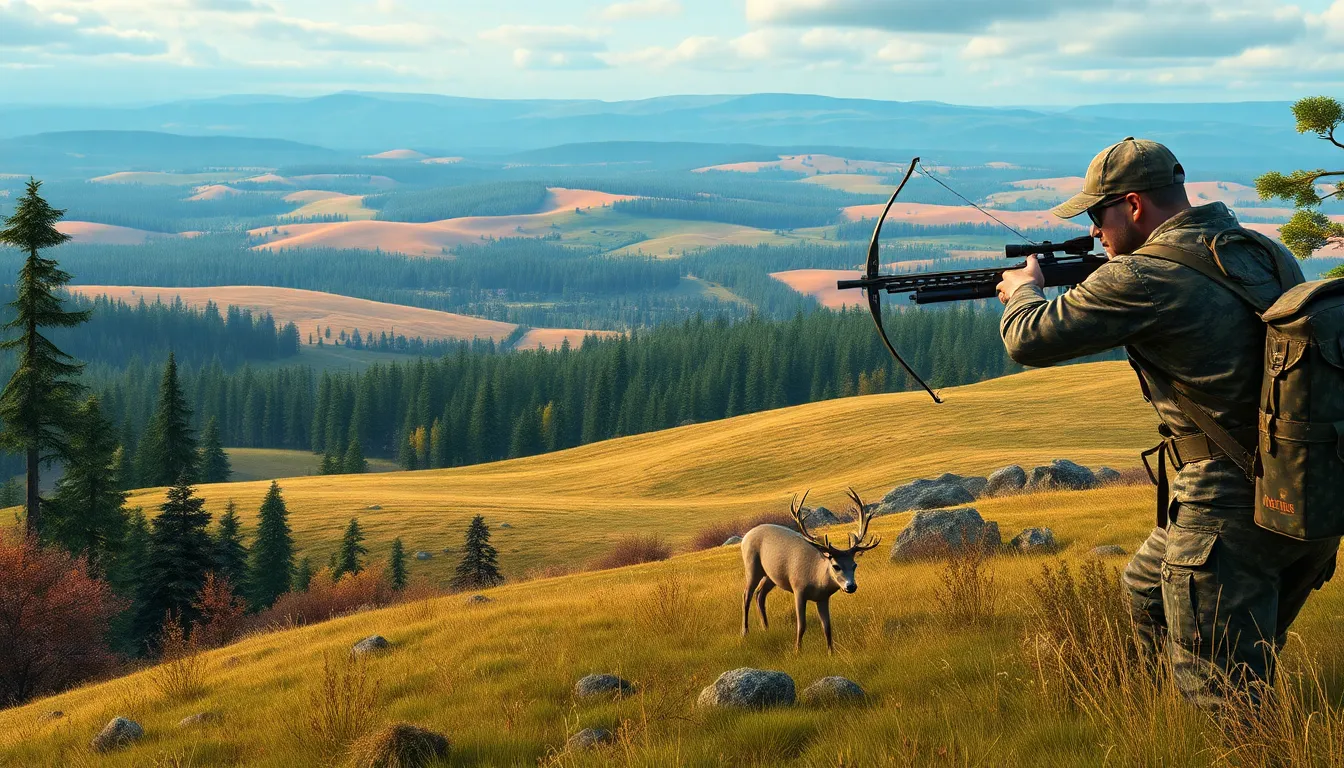In a world where the great outdoors can feel miles away, hunting video games offer the perfect escape. They deliver the thrill of the chase without the need for heavy boots or bug spray. Whether it’s stalking virtual deer through dense forests or tracking elusive predators across vast landscapes, these games provide an adrenaline rush that’s hard to resist.
Hunting Video Games
Hunting video games simulate the thrill of outdoor hunting, offering engaging experiences without physical demands. Players can explore diverse environments, from dense forests to vast plains, while tracking various game animals. Game developers use realistic graphics and sophisticated AI to enhance immersion, making players feel as though they’re truly in the wild.
Various hunting video games cater to different audiences, including casual gamers and seasoned enthusiasts. Popular titles often feature a range of hunting scenarios, allowing players to customize their experiences. Strategic elements are common, such as selecting gear, planning approaches, and making ethical decisions about hunting.
Multiplayer modes add another layer of excitement, enabling players to compete or cooperate with friends. Many games offer community features, where users can share tips or showcase their achievements. These interactions foster a sense of camaraderie among players.
Realism plays a significant role in the design of these games. Accurate animal behavior and weather effects create dynamic environments, further enticing players. Countless options exist for players interested in virtual hunting, from arcade-style shooters to simulation-focused experiences.
Statistics show a growing demand for hunting video games in recent years, indicating a shift towards digital hunting experiences. The appeal lies in accessibility and variety, allowing more people to engage with the hunting world. As technology continues to evolve, hunting video games are set to deliver even more authentic and thrilling experiences to players.
Popular Hunting Video Game Titles


Hunting video games offer various experiences, appealing to different player tastes. Classic and modern titles showcase the evolution of this genre.
Classic Hunting Games
Classic hunting games laid the groundwork for immersive gameplay. Titles like Deer Hunter drew attention with their realistic mechanics and engaging environments. Players often appreciated the straightforward gameplay that focused on tracking and shooting animals. Cabela’s Big Game Hunter also gained popularity, featuring expansive locations and a variety of game types. Nostalgia surrounds these games, attracting fans who cherish simpler graphics and gameplay forms. Engaging mechanics and simple controls ensured accessibility for all players.
Modern Hunting Games
Modern hunting games redefine the genre with advanced technology. TheHunter: Call of the Wild exemplifies this evolution, offering stunning visuals and a vast open world. Players immerse themselves in detailed simulations and experience realistic animal behavior. Titles like Hunting Simulator 2 emphasize strategic elements, combining gear selection and environment awareness. Multiplayer modes enhance interaction, allowing friends to hunt together or compete. Players seek authentic experiences, making technology a crucial aspect of modern hunting games. Enhanced AI and dynamic weather further enrich gameplay, maintaining player engagement.
Game Mechanics and Features
Hunting video games blend realism and engaging gameplay to captivate players. These mechanics create immersive experiences that vary widely between titles.
Realism vs. Arcade Style
Realism is a key component in many hunting games. Titles like TheHunter: Call of the Wild offer detailed animal behavior, weather effects, and lifelike environments. Conversely, arcade-style games focus on fast-paced action. Players of Cabela’s Big Game Hunter can enjoy simplified mechanics and instant gratification. Striking the right balance between realism and arcade style attracts different types of gamers. Individuals seeking in-depth simulations may prefer realistic games, while those desiring quick, fun encounters lean toward arcade options. This diversity enriches the hunting video game landscape.
Weapons and Equipment
Weapons and equipment play a vital role in enhancing gameplay. Players access various firearms and bows, each offering unique attributes. Options range from rifles with long-range capabilities to bows designed for stealthy approaches. Game mechanics often require players to select gear based on hunting goals and strategies. Customization options allow players to modify their equipment for better performance. Additionally, players can utilize gadgets like binoculars or scent eliminators to improve their hunting experiences. Overall, an array of weapons and equipment deepens player engagement, catering to both casual and strategic players.
Graphics and Sound Design
Hunting video games rely heavily on graphics and sound design to create an immersive experience. Developers focus on enhancing visual and auditory elements to replicate real-world hunting scenarios.
Visual Realism in Hunting Games
Visual realism stands out as a hallmark of many hunting video games. Detailed graphics capture the nuances of environments, from the textures of tree bark to the subtle movements of grass in the wind. Lighting plays a vital role, with dynamic shadows and realistic weather effects adding depth to landscapes. Various games, such as TheHunter: Call of the Wild, showcase these visual advancements, delivering lifelike animal models and elaborate ecosystems. Each element contributes to a player’s ability to feel fully integrated within the virtual wilderness. Enhanced graphics not only elevate aesthetic appeal but also facilitate strategic gameplay by enabling finer observation of animal behaviors.
Immersive Soundscapes
Immersive sound design elevates the hunting experience significantly. Authentic sounds create an atmosphere that closely mirrors real-life encounters. Ambient noises, like rustling leaves and distant animal calls, enhance situational awareness and deepen immersion. Engineered sounds, such as the click of a firearm or the crunch of footsteps on different terrains, introduce additional layers. Titles like Hunting Simulator 2 employ these auditory techniques effectively, ensuring that players feel the tension and excitement of real hunting scenarios. With high-quality audio, players can enhance their strategies, making hunting expeditions more thrilling. Overall, soundscapes enrich gameplay, making each encounter feel genuine and impactful.
Community and Multiplayer Aspects
Hunting video games foster a vibrant community, enhancing player interactions and collaborative experiences.
Online Multiplayer Experiences
Players can engage in various online multiplayer modes, enabling cooperation or competition. Allies become partners in hunting expeditions, sharing strategies and tips. Competitive modes pit players against each other to achieve the highest scores, creating exhilarating challenges. Titles often include features like leaderboard systems, rewarding skill and dedication. Events and tournaments frequently bring enthusiasts together, further strengthening community ties. Ultimately, these multiplayer experiences enrich gameplay, showcasing the social aspect of hunting video games.
Community Modifications and Add-ons
Community-driven modifications and add-ons expand the hunting experience significantly. Players can access custom maps, unique animal species, and diverse hunting gear through these modifications. Engaging with these enhancements allows individuals to explore fresh environments and tactics. Additionally, modding communities often share their creations, providing tutorials and support. Popular platforms facilitate this collaboration, allowing players to exchange ideas and improve experiences together. Thriving mod communities thus play a crucial role in keeping hunting video games dynamic and engaging.

